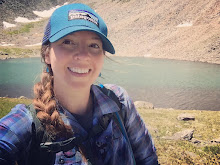
Five-year-old Jude Sol’s favorite thing about bowling at the Presidio Bowling Center is “knocking down the pins.” However, the fate of the Presidio Bowling Center is as uncertain as his knocking down all the pins; it is possible that the center will lose its lease in order to make room for new development.
The Presidio Trust has plans to transform the Main Post area of San Francisco’s Presidio, where the Presidio Bowling Center is located, to revive its historical past. Recently those plans have included replacing the Bowling Center with a contemporary art museum proposed by Donald Fisher, the co-founder of Gap Inc, to house his large art collection.
Darrell Herbert, the general manager of the Presidio Bowling Center, said the community rallied behind the center by signing petitions saying that residents were not interested in seeing a museum built in the location. During the summer, Fisher withdrew his proposal for the art museum. While the Presidio Bowling Center remains open on a month-to month lease as the Presidio trust continues with its Main Post planning, the fate of the center remains uncertain.
Dana Polk, the Presidio Trust spokesperson, said, “We just don’t know, it’s too early to say at this point.” about future plans for the Bowling Center’s location.
Victor Meyerhoff, owner of the Presidio Bowling Center, said that he has been talking with the trust about moving to a different location within the Presidio. He submitted a proposal to move to one of the old airplane hangers on Crissy Field but he said, “they don’t like our proposal. Basically I think it comes down to dollars and it is very expensive to retrofit one of those buildings.”
Polk said that the Presidio Trust appreciates the center being within the Presidio and is working with Meyerhoff to find a new location. However, Meyerhoff said he does not feel that the Presidio Trust at this time is very committed to keeping the center in the Presidio.
“The Presidio really wants to get market rent for any of their buildings here, they don’t see all of the intangible values to keeping bowling in the Presidio, they want to get the same amount of rent that they would get for putting an office building here and so that is the difficult part, we can’t generate that much revenue,” Meyerhoff said.
“The trend in the bowling industry right now is to make a bowling nightclub and so the bowling is really the secondary part of it,” said Meyerhoff. “It is more like a club with high-end food and beverage, but it doesn’t cater to kids and families, it caters to 21 to 35-year-olds that have a lot of disposable income. That’s not why I got into the business and that’s not why I want to stay in the business.”
Herbert coaches a youth bowling league which travels all around the world to compete in tournaments. “We travel to different cities, different states and different countries to bowl for scholarship money,” said Herbert. “Our next big tournament coming up is in Las Vegas. It’s a huge tournament that they offer every year and you have kids from all over all the country coming to bowl this tournament for over $70,000 in scholarships.”
The Bowling Center has a deli and a grill, offering inexpensive snacks and meals. It also has 50 different kinds of beer and various different types of wine. John Jurinek was in the Bowling Center to get a quick bite to eat and said, “I haven’t been here in about two months, we thought they were going to close, we drove by and I said ‘hey, it’s still open.’”
Bowling has been in the Presidio for almost 100 years, since 1912, according to Meyerhoff. The building where the bowling center is currently located was originally owned by the military when it opened in 1989. Mary Anne Sarrzin, who was visiting the center with her husband and young son remembers when the military operated the bowling center since her father was in the military. “Now we can come here at night on a date or with our son during the day,” she said.
“Anybody can play [bowl] and anybody can win, it’s really a neat sport for that reason,” Meyerhoff said. “We are open 365 days a year, you can do it when it rains you can do it when it’s sunny. There really is no limit, anybody can come bowling.”

















